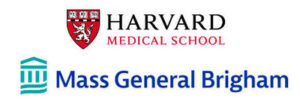Project 2: Understanding Disorder-Specific Neural Pathophysiology in Laryngeal Dystonia and Voice Tremor
Center Sites: Department of Otolaryngology-Head & Neck Surgery, Massachusetts Eye and Ear, Harvard Medical School; Departments of Otolaryngology-Head & Neck Surgery and Radiology, University of California San Francisco
Lead PIs: Kristina Simonyan, MD, PhD, DrMed, John F. Houde, PhD, Srikantan Nagarajan, PhD
ClinicalTrials.gov registration: NCT05216770
Laryngeal dystonia (LD) and Voice tremor (VT) are neurological voice disorders that impair speech production. The characteristic feature of LD (i.e., occurring during speaking but not laughing or crying) and the lack of physical laryngeal abnormalities suggests that LD is likely a disorder affecting the task-specific control of phonation by the central nervous system (CNS). Similarly, VT is often observed without any clear peripheral laryngeal etiology, also suggesting a central origin but distinct from that affected in LD.
The overall goal of this project is to characterize the common and distinct features of CNS pathophysiology in the neurological voice disorders, LD and VT.
The act of speech is a dynamic process, including initial glottal movement, voice onset, and compensatory responses to sensory feedback fluctuations during sustained phonation. Identifying specific functional impairments in LD and VT requires a clear understanding of when in the process of phonation, as well as where in the CNS, aberrant activity occurs. Due to their poor temporal resolution, prior neuroimaging studies have not been able to address the question of when abnormal CNS activation occurs relative to specific phonation events. As a result, critical clues about the underlying etiologies in these disorders have likely been missed.
We conduct a multimodal brain imaging assessment of CNS abnormalities associated with LD and VT to examine: 1) Spatial and temporal CNS pathophysiology during speech and other vocal tasks; 2) Sensorimotor modulations on CNS pathophysiology; and 3) Motor learning and CNS pathophysiology.
Future treatments for LD and VT can be developed by targeting CNS pathophysiological mechanisms identified in this project. For example, this project will help identify neural targets that have a therapeutic potential based on disorder-specific pathophysiology for both invasive and non-invasive brain stimulation.

 Dystonia and Speech Motor Control Laboratory | Department of Otolaryngology-Head & Neck Surgery, Massachusetts Eye and Ear and Harvard Medical School | 243 Charles Street, Suite 421 | Boston, MA 02114 |
Dystonia and Speech Motor Control Laboratory | Department of Otolaryngology-Head & Neck Surgery, Massachusetts Eye and Ear and Harvard Medical School | 243 Charles Street, Suite 421 | Boston, MA 02114 |